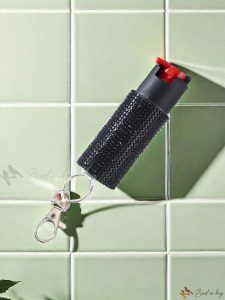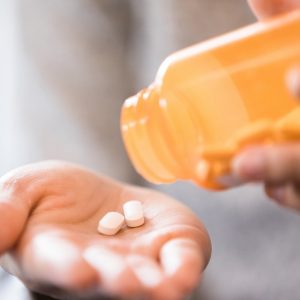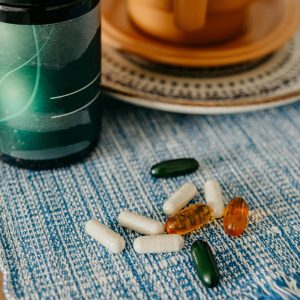
Sun protection is essential for everyone, regardless of age or skin type. While sunscreen is a well-known defense against the sun’s harmful ultraviolet (UV) rays, UV protection spray offers another line of defense. This article explores UV protection spray, its benefits, and how to use it safely.
Understanding UV Protection Sprays
UV protection spray comes in a can and applies like traditional aerosol spray. It’s often used on items that sunscreen lotions or creams can’t effectively cover, such as:
- Beach umbrellas
- Pool chairs
- Fishing hats
- Sports equipment
- Clothing
How it Works: UV protection spray contains ingredients that absorb or reflect UV rays, reducing the amount of UV radiation reaching the surface it’s applied to.
Benefits of UV Protection Spray
Here are some of the advantages of using UV protection spray:
- Protects Fabrics: Sunscreen can damage some fabrics. UV protection spray offers an alternative for sun-protective clothing.
- Reapplication to Skin Not Required: Once applied, UV protection spray remains effective for a certain period, unlike sunscreen that needs to be reapplied throughout the day.
- Offers Water Resistance: Some UV protection sprays are water-resistant, making them suitable for poolside or beach use.
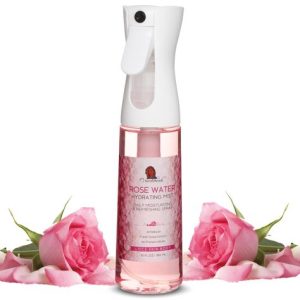
Choosing the Right UV Protection Spray
When selecting UV protection spray, consider these factors:
- Surface Type: Different sprays are formulated for fabrics, plastics, or other materials. Choose a spray designed for the surface you’ll be using it on.
- Protection Level (UPF): Similar to sunscreen, UV protection spray has a Ultraviolet Protection Factor (UPF) rating. Higher UPF indicates greater UV protection.
- Durability: Consider how long the spray’s protection lasts, especially if using it outdoors for extended periods.
- Water Resistance: If using the spray near water, choose a water-resistant formula.
Applying UV Protection Spray Safely and Effectively
For optimal results, follow these application tips:
- Shake the can well: Ensure the contents are evenly mixed before spraying.
- Apply in a well-ventilated area: Avoid inhaling the spray.
- Hold the can at a recommended distance: Instructions will vary depending on the brand.
- Apply in even strokes: Cover the entire surface evenly.
- Allow drying time: Let the spray dry completely before use.
- Reapply as needed: Most sprays require reapplication after a certain time or following contact with water.
Remember: UV protection spray is not a substitute for sunscreen. Always wear sunscreen on exposed skin when outdoors.
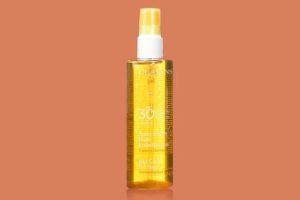
Sun Safety Beyond UV Protection Spray
Sun protection goes beyond UV protection spray. Here are some additional sun safety tips:
- Seek shade: Especially during peak sun hours (10 am to 4 pm).
- Wear protective clothing: Long sleeves, pants, hats with wide brims, and sunglasses that block UVA and UVB rays.
- Apply sunscreen: SPF 30 or higher, broad spectrum, and water-resistant. Apply liberally to exposed skin and reapply every two hours, or more often if sweating or swimming.
Sun protection is crucial for maintaining healthy skin and reducing the risk of sun damage. UV protection spray can be a valuable tool in your sun safety arsenal. By using it correctly, along with other sun protection measures, you can enjoy the outdoors safely and responsibly.
Environmental Impact of UV Protection Spray
While UV protection spray offers sun protection benefits, it’s important to consider its environmental impact. Here’s a closer look:
-
Microplastics: Some UV protection sprays contain microplastics, which can harm marine life if they enter waterways.
-
Air Quality: Aerosol propellants can contribute to air pollution.
-
Chemical Breakdown: The breakdown of some UV protection spray ingredients can potentially harm environmental ecosystems.
Eco-Friendly Alternatives to UV Protection Spray
Several eco-friendly alternatives can provide sun protection for your gear:
-
Sun-protective clothing: Look for clothing with a high Ultraviolet Protection Factor (UPF) rating.
-
Shade sails and umbrellas: These provide excellent sun protection for people and equipment.
-
Consider natural materials: Tightly woven natural fabrics like canvas offer some UV protection.
Sun safety is essential for everyone. By combining sun protection strategies like UV protection spray (when used responsibly), sun-protective clothing, shade, and sunscreen, you can enjoy the outdoors safely and minimize your environmental impact.
Remember: When using UV protection spray, follow the manufacturer’s instructions carefully and dispose of the can according to local guidelines. Choose eco-friendly alternatives whenever possible.
By making informed choices, you can protect yourself from the sun while safeguarding the environment for future generations.
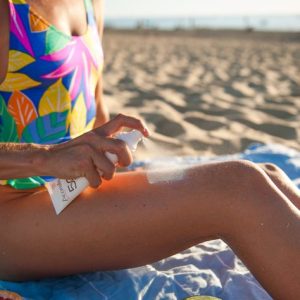
Beyond the Beach: Everyday Uses for UV Protection Spray
UV protection spray isn’t just for beach umbrellas! Here are some surprising ways this handy product can be used in everyday life:
-
Car Interiors: Sun shining through car windows can damage and fade upholstery. UV protection spray can help protect your car’s interior from sun damage. Always test the spray on a small inconspicuous area first to make sure it doesn’t stain or damage the fabric.
-
Outdoor Furniture: Pool chairs, hammocks, and patio furniture are all exposed to sun damage. UV protection spray can help extend the lifespan of your outdoor furniture.
-
Play Equipment: Sun can make plastic swing sets and slides hot to the touch. UV protection spray can help reflect sunlight and keep them cooler.
Remember: Reapply UV protection spray according to the instructions, especially after rain or extended sun exposure.
Keeping Your Gear Protected: Understanding Spray Longevity
How long UV protection spray lasts depends on several factors:
- Ingredients: The specific formula of the spray will impact how long its protection remains effective.
- Surface Type: The material the spray is applied to can affect how well it adheres.
- Sun Exposure: Direct sunlight breaks down the protective ingredients in the spray over time.
Look for Sprays with Fade Indicators: Some UV protection sprays contain fade indicators that let you know when it’s time to reapply. The sprayed surface might change color slightly, indicating reduced protection.
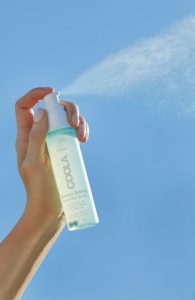
Sun safety is a team effort! Here are ways to encourage sun safety habits in your family and community:
- Lead by Example: Make sun protection a priority yourself. Apply sunscreen regularly and wear protective clothing outdoors.
- Sun Safety Education: Talk to children about sun safety and the importance of protecting themselves from the sun.
- Sun Safety Gear: Provide children with wide-brimmed hats, sunglasses, and sun-protective clothing.
- Sun-Safe Activities: Plan outdoor activities for times of day with less sun exposure, like early mornings or evenings.
By working together, we can create a culture of sun safety and protect ourselves and future generations from the harmful effects of UV rays.
Remember: Sun protection is an essential part of enjoying the outdoors responsibly. Choose sun safety measures that work best for you and your loved ones.
